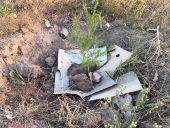If I could give some advice, having used a permaculture framework to get my parent's place in NC with similar utisols going:
Pay particular attention to access and water. If the garden is going to remain for annuals and herbs (a veg/herb garden), try to lay out double reach beds. Utilize key hole pathways and make your paths at a minimum 2ft across so that they are comfortable to work from. If your parents are a part of the project, get them involved in the layout of the beds so they feel comfortable as well. Access is of paramount importance, no matter what scale a garden is. Of course, pathways can change. However, it makes very good sense to ensure that your hard work to decompact the soil is followed through.
See if a "pits and mounds" strategy to increase the diversity of site conditions would be useful. Adding texture to otherwise flat ground in this way is a wonderful tool for increasing productivity. It is very similar, although on a much smaller scale, to Sepp Holzer's crater garden/farm pattern.
Also, keep up with your cover crops because you never know if you will have a mild to non existent winter. Push the limits of when and what you are planting. If your crimson clover, for example, does not grow swiftly and with an intense green color, you will want to dig one up and cut open the root nodules to see if they are actually fixing nitrogen. The nodule should be a pinkish hue if it is active. I found that for peace of mind it was helpful to purchase the appropriate bacterial inoculant for the first year when planting legumes for a cover crop. This way I would know for sure that subsequent sowings of legumes would meet their symbiots (its also ridiculously cheap). That also reminds me of mycorrhizal inoculation: endomycorrhizae, which associate with the vast majority of our herbs and vegetables (including clovers), almost never form a mushroom. So knowing that their spores are present and ready to begin rebuilding their mycelial networks in a garden that has been tilled/doubledug/otherwise severely impacted, is also something that cannot be known for sure. If you know someone who is practicing no-till veg gardening and has very good soil, see if you can follow the home-grown inoculant instructions from the Rodale Institute and make your own if you don't want to buy a commercial product (from a reputable company).
Lastly, see if you can dig a small pool for frogs. If a suitable place for a small wildlife pool is further from the garden, link the pool and the garden together with perennial herbage.
This link will take you to the archive of my blog that follows the project back in the States to see one example of what is possible in our soil. Oh, that reminds me: see if you can send topsoil samples in to your state lab. While it is possible to read the landscape from plants and soil conditions, and it is true that many of these tests are not perfect, they do give a good baseline from which amendments can begin.
Anyway, from one Floridian to another, good luck and welcome to Permies.
Edit: If you want Russian Comfrey Bocking 14 cultivar, send me a PM here. I may be able to have my parents dig up some roots and send them to you all. They've been growing exceptionally well and behaving as expected (not walking all over the place, sterile seeds [but ample nectar/pollen for insects]) since 2011 in Winston-Salem NC)





















 1
1








































 1
1

















































